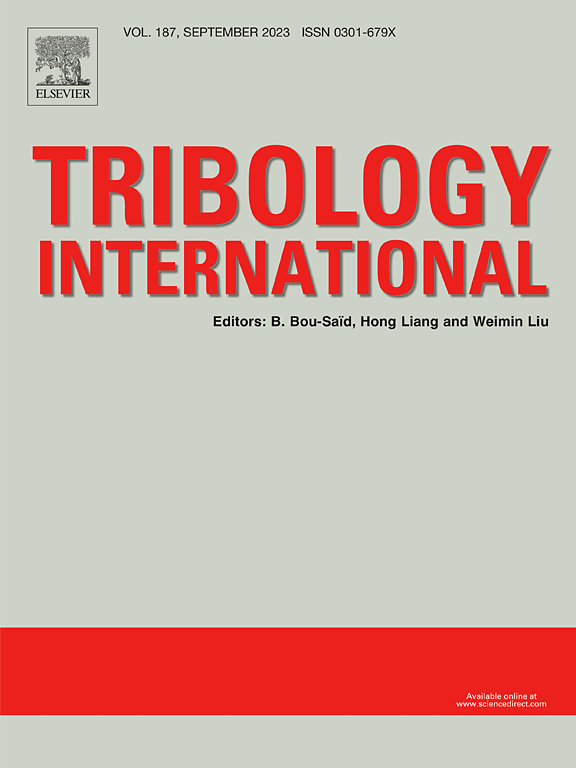实现原子平坦的镍钛表面:一种针对选择性材料去除的摩擦化学浆料策略
IF 6.1
1区 工程技术
Q1 ENGINEERING, MECHANICAL
引用次数: 0
摘要
镍钛(NiTi)合金在航空航天和医疗工业中的应用日益广泛,推动了对超精密抛光的研究。NiTi的耐腐蚀性和硬度使得通过化学机械抛光达到原子级表面光洁度变得困难。研制了一种由过氧化氢(H2O2)、复合磨料(硅溶胶和Eu2O3)、扁桃酸(MA)和苹果酸(MalA)组成的新型抛光浆料。在20 × 20 μm²的面积上,表面粗糙度(Sa)为0.141 nm,这是报道的最低值。材料表征证实了浆料的强氧化性。此外,该复合磨料具有高效的催化剂作用,并表现出优异的分散稳定性。研究表明,浆料通过协同磨蚀作用促进表面化学层的机械去除,最终使NiTi合金表面原子光滑。这一结果在超精密制造领域具有巨大的应用潜力。本文章由计算机程序翻译,如有差异,请以英文原文为准。
Achieving atomically flat NiTi surfaces: A tribochemical slurry strategy targeting selective material removal
The growing application of Nickel-Titanium (NiTi) alloy in aerospace and medical industries has spurred research into ultra-precision polishing. NiTi's corrosion resistance and hardness make achieving an atomic-level surface finish through chemical mechanical polishing difficult. A new polishing slurry containing hydrogen peroxide (H2O2), composite abrasives (silica sol and Eu2O3), mandelic acid (MA) and malic acid (MalA) was developed. A surface roughness (Sa) of 0.141 nm was achieved over an area of 20 × 20 μm², which was the lowest value reported. Material characterization confirmed the strong oxidizing nature of the slurry. Moreover, the composite abrasives functioned as efficient catalysts and exhibited excellent dispersion stability. The study shows that the slurry promotes the mechanical removal of surface chemical layers through synergistic abrasive action, ultimately producing an atomically smooth surface on NiTi alloys. This result demonstrates great application potential in ultra-precision manufacturing.
求助全文
通过发布文献求助,成功后即可免费获取论文全文。
去求助
来源期刊

Tribology International
工程技术-工程:机械
CiteScore
10.10
自引率
16.10%
发文量
627
审稿时长
35 days
期刊介绍:
Tribology is the science of rubbing surfaces and contributes to every facet of our everyday life, from live cell friction to engine lubrication and seismology. As such tribology is truly multidisciplinary and this extraordinary breadth of scientific interest is reflected in the scope of Tribology International.
Tribology International seeks to publish original research papers of the highest scientific quality to provide an archival resource for scientists from all backgrounds. Written contributions are invited reporting experimental and modelling studies both in established areas of tribology and emerging fields. Scientific topics include the physics or chemistry of tribo-surfaces, bio-tribology, surface engineering and materials, contact mechanics, nano-tribology, lubricants and hydrodynamic lubrication.
 求助内容:
求助内容: 应助结果提醒方式:
应助结果提醒方式:


